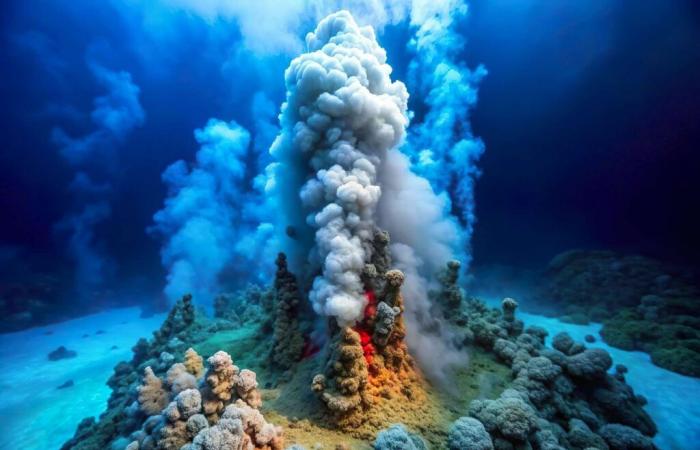
4.55 billion years ago, the heart of a vast disk of dust and gas rotating in space collapsed on itself, giving birth to a new star, our Sun. At the same time, several protoplanetary bodies will begin to form. Located in different orbits, these small stars will quickly grow to form the eight planets of our very young Solar System. Its appearance is finalized in just a few tens of millions of years.
However, each planet will continue to evolve. As the planetary interiors differentiate, leading to the formation of a core and a coatcoatthe surfaces of the small rocky planetsrocky planets located in the central part of the Solar systemSolar system are still covered in an ocean of magmamagma. The progressive cooling of these planets will, however, lead to the crystallization of this ocean of rock in fusionfusionleading to the formation of a crustcrust solidsolid. For Earth, this crystallization is estimated to have occurred approximately 4.47 billion years ago. A surface that will not remain bare for very long. Because the degassingdegassing of the mantle, coupled with cometary bombardment, will allow the formation of water liquidliquid on the surface… and the birth of the first oceans.
A meteorite which reveals the existence of a primitive ocean on Mars
Certain clues tell us that VenusVenus and Mars would also have both possessed such a primitive ocean before transforming, for different reasons, into arid planets. A recent study also reveals to what extent the situation could have been similar between Earth and Mars.
Analysis of a grain of zirconzircon from the famous meteoritemeteorite Martian known as “Black Beauty” suggests that the Red Planet had, very early in its history, liquid water on its surface. The results, published in the journal Science Advancesare even more exciting than that.
“Black Beauty” is certainly not a meteorite like the others. Discovered in 2011, it is in fact made up of rocks more than 4.43 billion years old, whose signature is clearly Martian. It is therefore a direct witness to thedawndawn of our Solar System, as there are almost no more on Earth. The analysis of this precious meteorite made it possible to retrace the evolution of Mars just after its formation. A team of researchers from Curtin University however, pushed the analysis of a zircon even further. And the results reveal that this tiny mineralmineralaged 4.45 billion years, porteporte the geochemical signature of contact with liquid water, and not in just any environment.
Hydrothermal vents on Mars 4.45 billion years ago, so why not life?
This zircon would indeed have been in contact with a hot hydrothermal fluid, as is generally found in volcanic environments. On Earth, the sources hydrothermalessources hydrothermales are thus frequent at the level of ocean ridgesocean ridges. However, we can consider that on the primitive Earth, while the heatheat internal is still very high, this type of environment must have been even more frequent at the bottom of the initial ocean. More and more studies suggest that it was at these hydrothermal vents that life appeared, more than 4 billion years ago.
If, as this new study suggests, these hydrothermal vents also existed on Mars at the same period, how can we not allow ourselves to think that reactions prebioticsprebioticsor even biotic, took place as on Earth? The origin of life is in fact based on a series of chemical reactionschemical reactions from reagentsreagents and of catalystscatalysts which are particularly found in hydrothermal environments.
Further proof that Martian life could one day exist!





